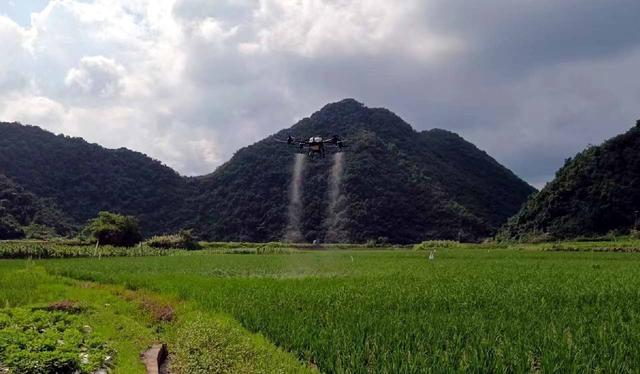Uavs are widely used in agriculture, such as forest protection, quantitative feeding in fisheries, mapping and pesticide spraying.
Domestic drones are already widely used in agriculture.
Take plant protection unmanned aerial vehicles (UAVs) as an example. Last year, there were more than 120,000 UAVs operated by professional pest control service organizations, covering an area of 1.07 billion mu.
Plant protection drones were a novelty a few years ago, but now they are very popular in rural areas. Current plant protection UAVs are more intelligent. Artificial intelligence helps UAVs to identify farmland boundaries, fruit trees, weeds, pests and diseases, cotton puffing, etc. Manufacturers can also set patterns for specific crops.
This also makes the operation of the plant protection UAV easier and more efficient. In 2015, the operation efficiency was only 50 mu/hour, and last year, it was up to 320 mu/hour.
Last year, there were more than 200,000 pilots of plant protection unmanned aerial vehicles (UAVs). Such a large number of employees means that the industry of flying UAVs has been very difficult. The market of making money in the past no longer exists, so many people have left the industry.
But in Southeast Asia, the use of drones in agriculture has yet to become widespread.
Chinese drone makers are making some headway in this market.
Such as the most widely used plant protection drones.
Chinese plant protection UAVs often work with pesticide manufacturers to explore overseas markets. For example, JIFi Technology has signed a comprehensive strategic cooperation agreement with Bayer to promote the popularization of smart agricultural technologies in Southeast Asia and Pakistan.
Many places in Southeast Asia grow cash crops, such as palm and durian, which grow tall themselves. In addition, the terrain is relatively rugged, with traditional methods, such as backpack manual spray machine, backpack electric spray machine, stretcher type spray machine, step sprayer, motorized high-pressure spray gun spray pesticide, or the machine can not be transported in, or spray is not convenient, can not reach, low work efficiency, high labor intensity.
And in the hot outdoor artificial medicine, easy to heat stroke, pesticide in the air or stick to the skin surface is also easy to poison people.
In addition, other agricultural work, such as mapping forests and fields, can also be used by drones.
In Malaysia, Augo Forestry protection drones have been used to map palm forests, reducing costs by more than 30%. The DJI plant protection UAV provides customized service “oil palm mode” for pest management of oil palm, which can spray the tree center at a fixed point, which can save pesticides.
If the oil palm is drugged by the traditional manual method, it can only be drugged by about 60 mu a day, while using DJI T16 operation, it can be drugged by about 200 mu a day, which is equivalent to 3 times the artificial efficiency, which is very labor saving.

Saving labor is important to agriculture in many countries.
For example, in Thailand, the population over 60 years old has accounted for about 18% of the total population, indicating a serious aging situation. Young people also tend to move to cities in search of opportunities, and some of the lower-paying, grueling and dangerous agricultural work, such as pesticide dusting, is done by laborers in Laos, which is culturally similar to Thailand and poorer.
But after the outbreak, there was a shortage of Laotian laborers who wanted to farm in Thailand.
In the face of labor shortage, local people began to use drones to spray pesticides on crops, and experienced good results. Artificial pesticide spraying can cover about 20 mu of paddy fields in a day, and plant protection drones can operate over 100 mu a day, which is three or four times more efficient.






Please sign in to comment
register